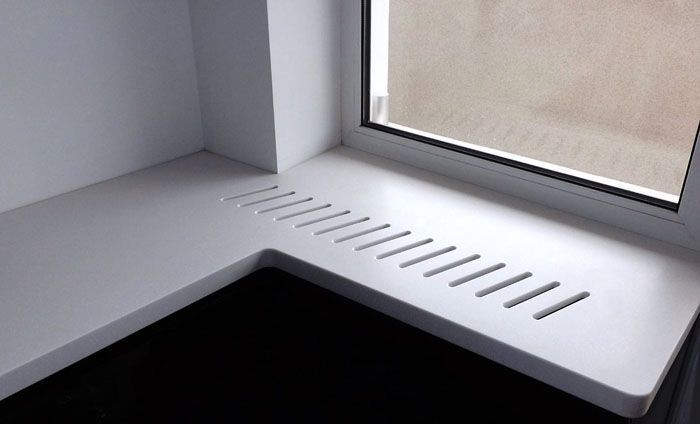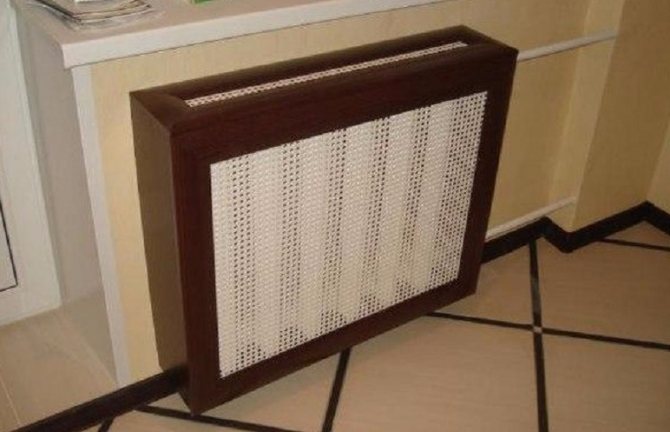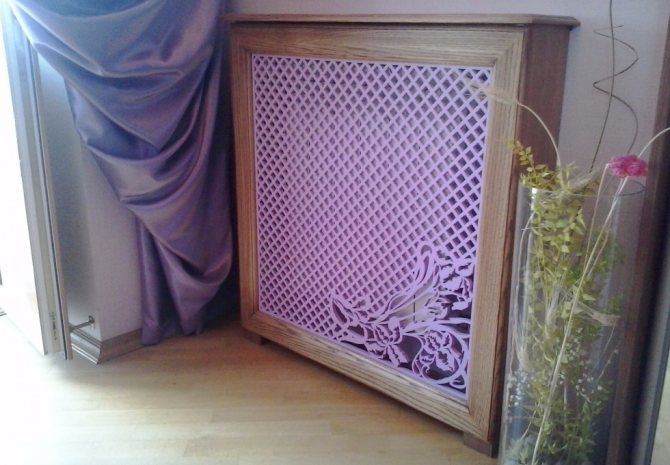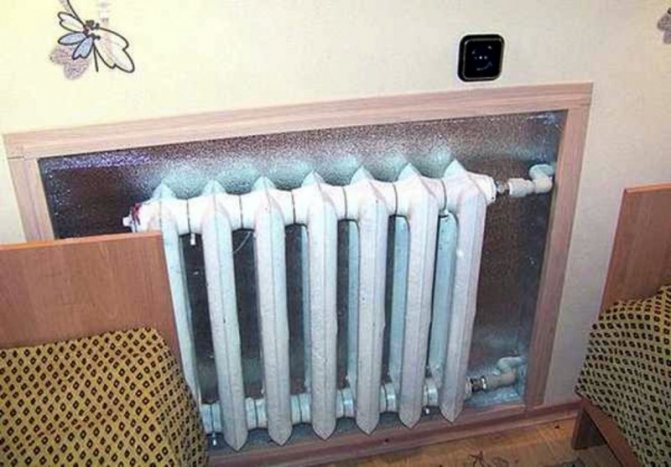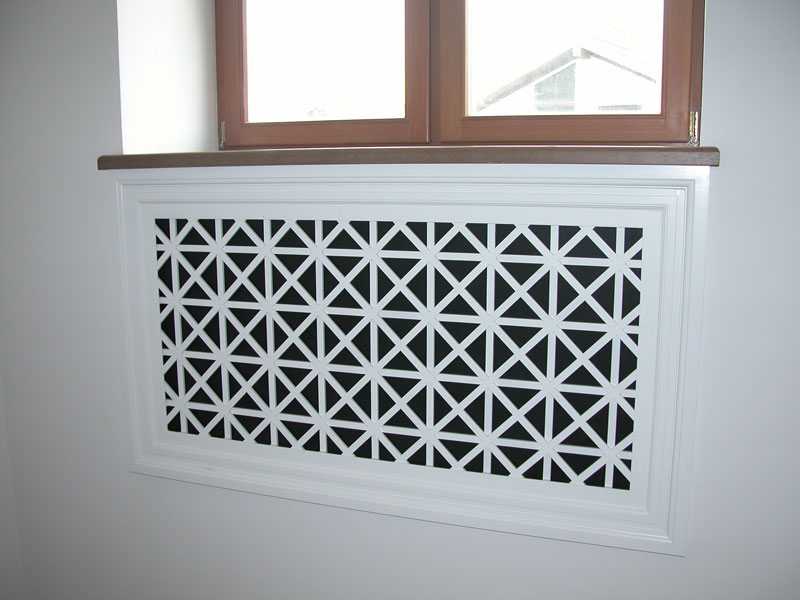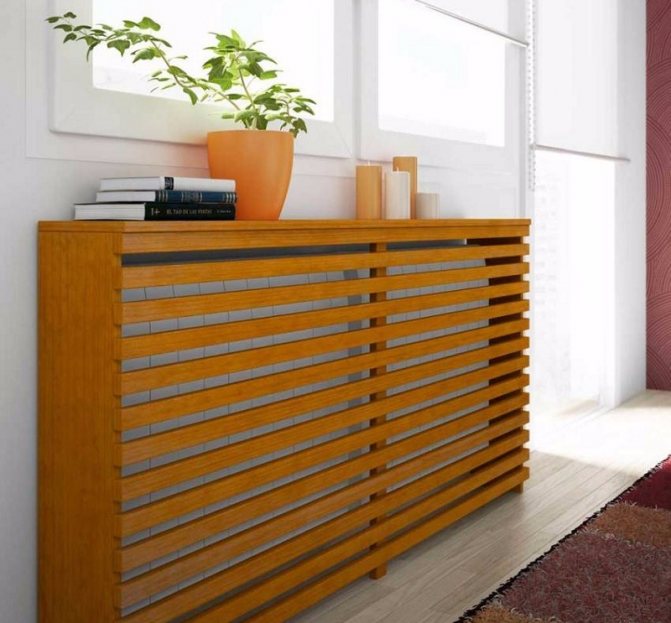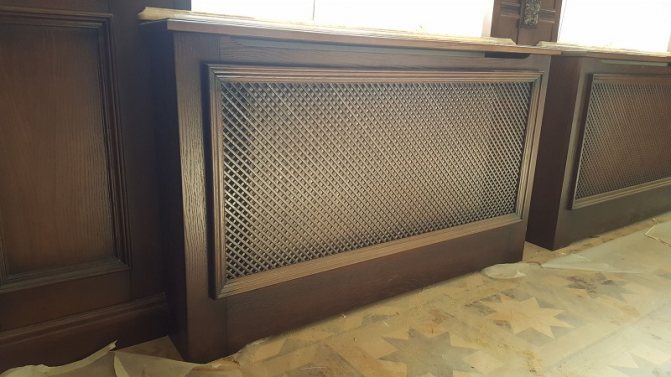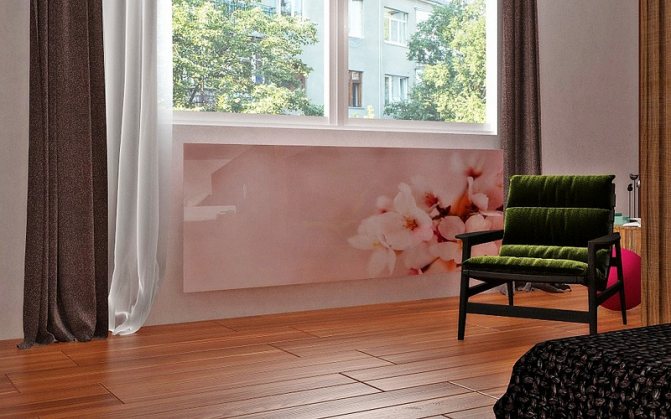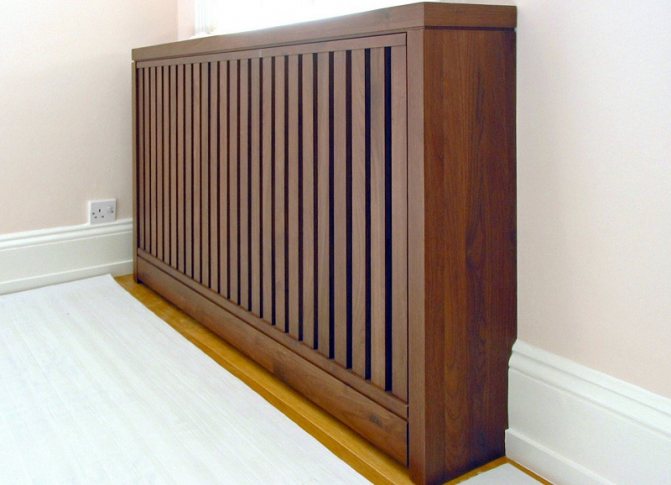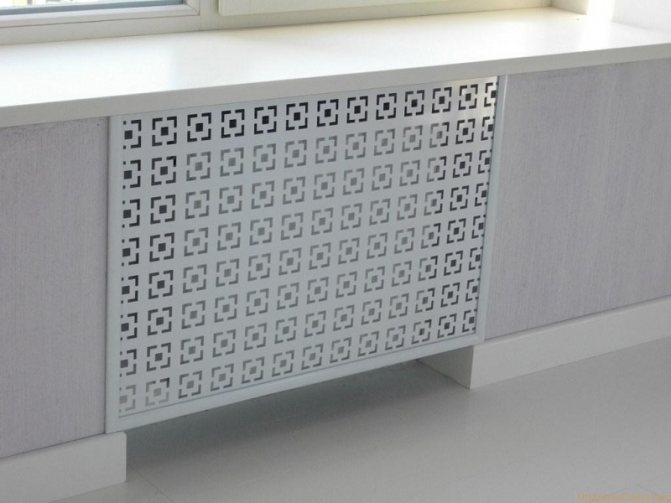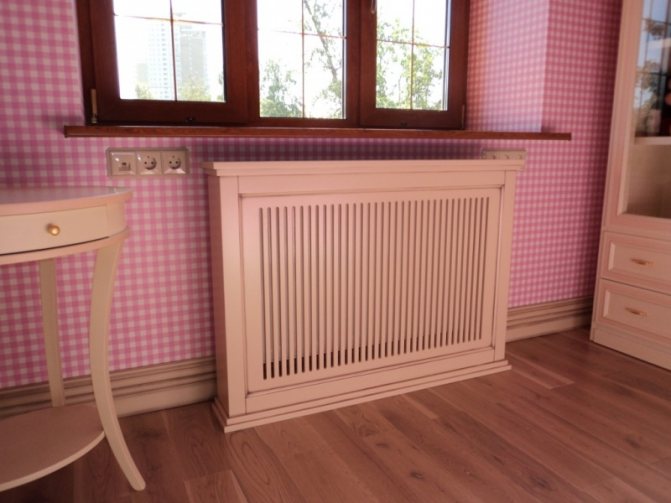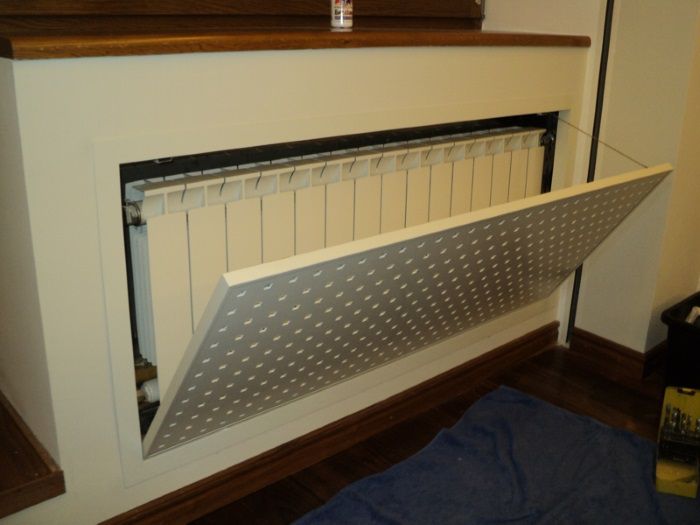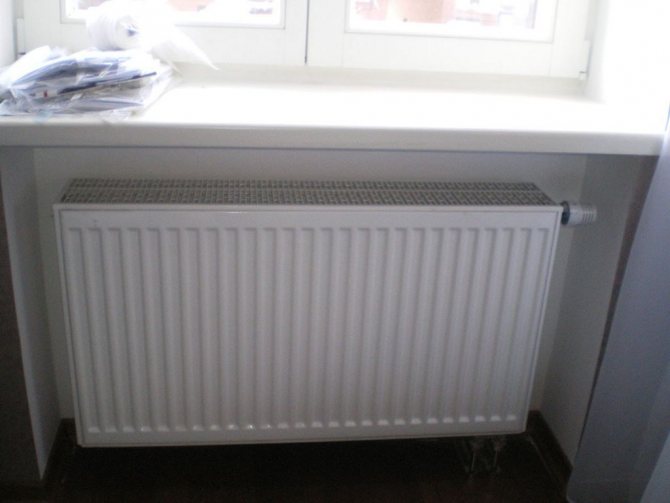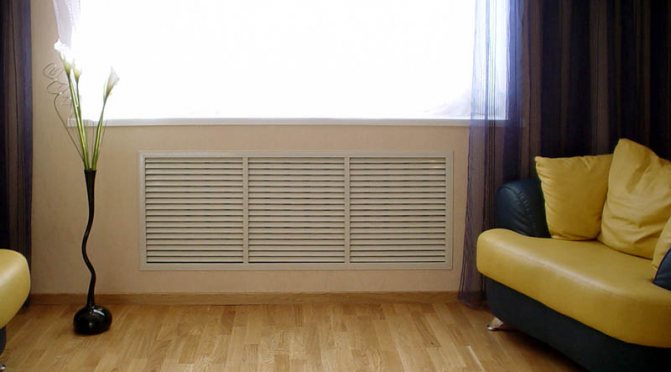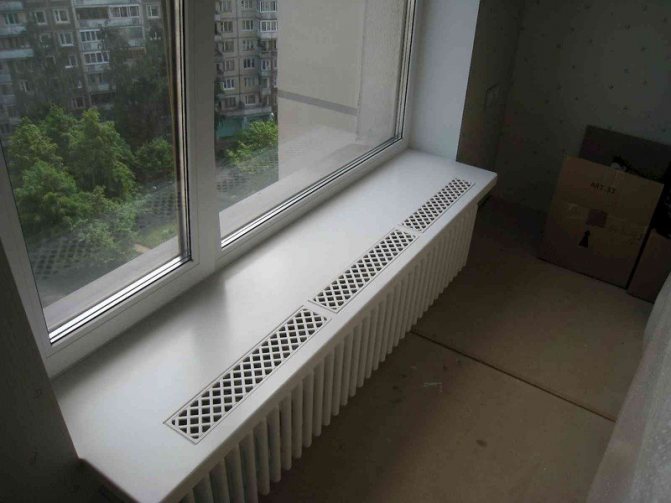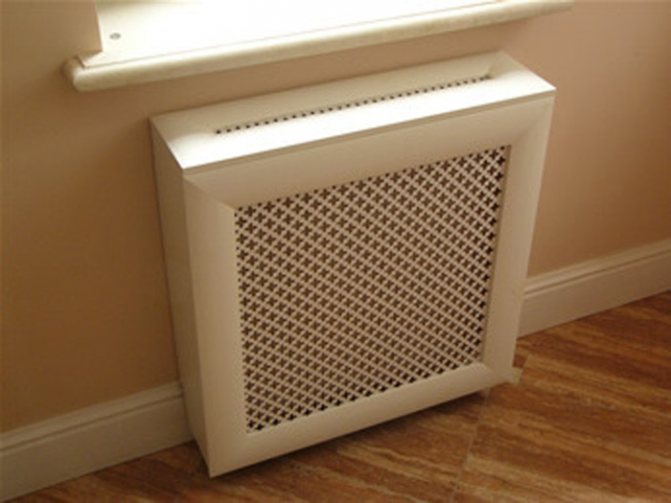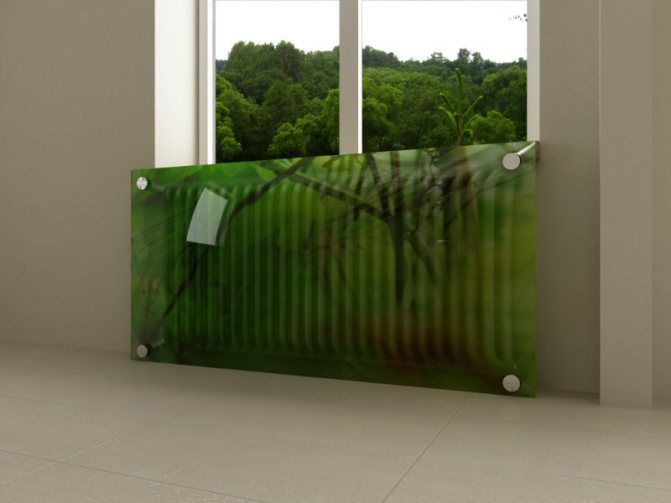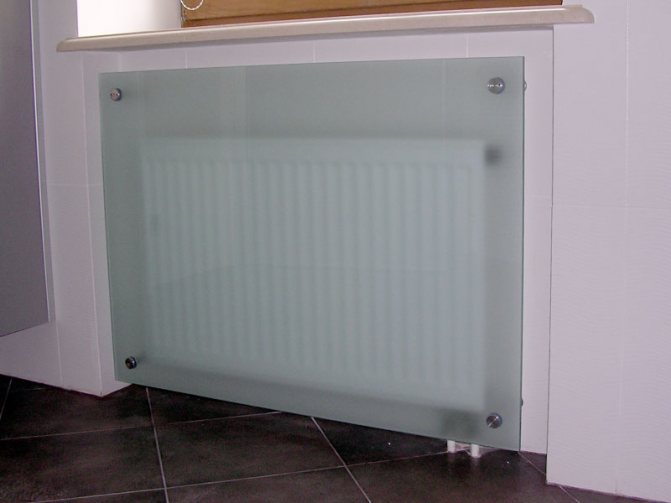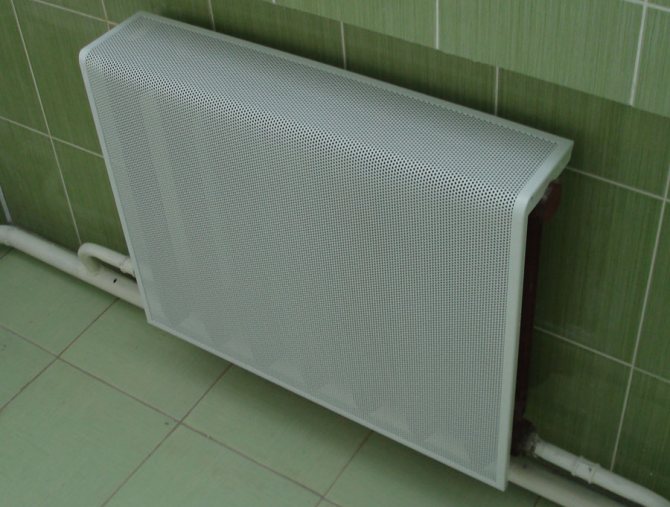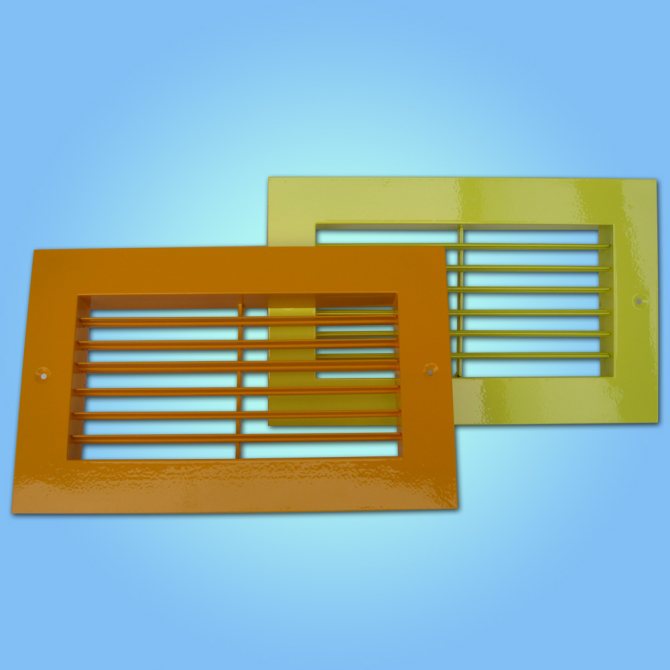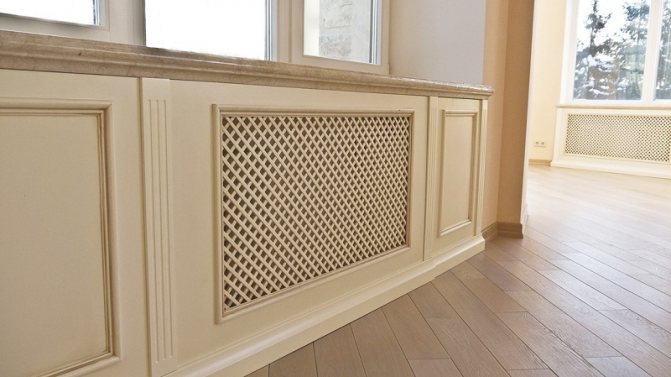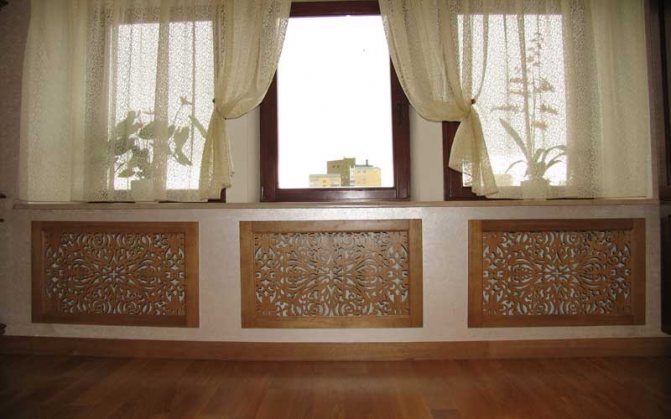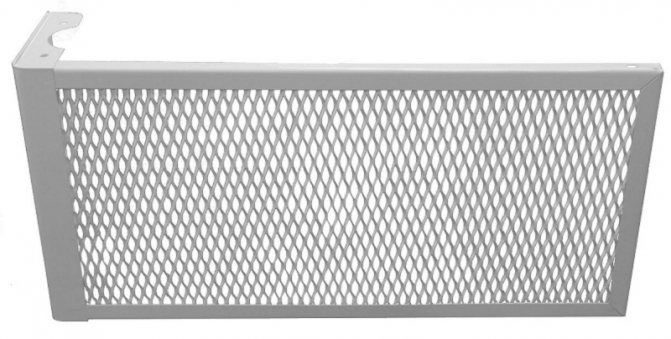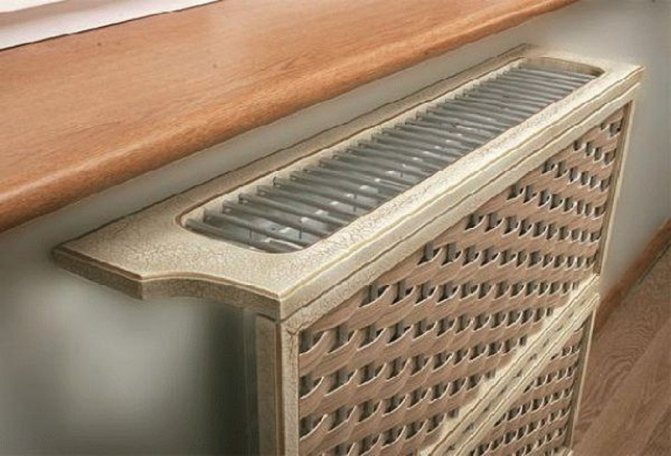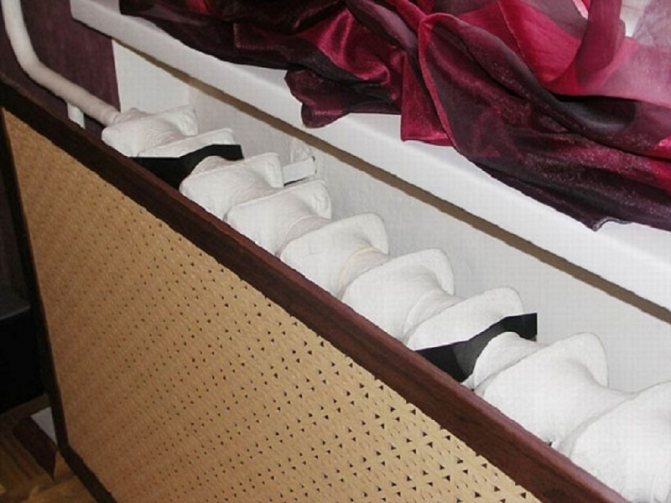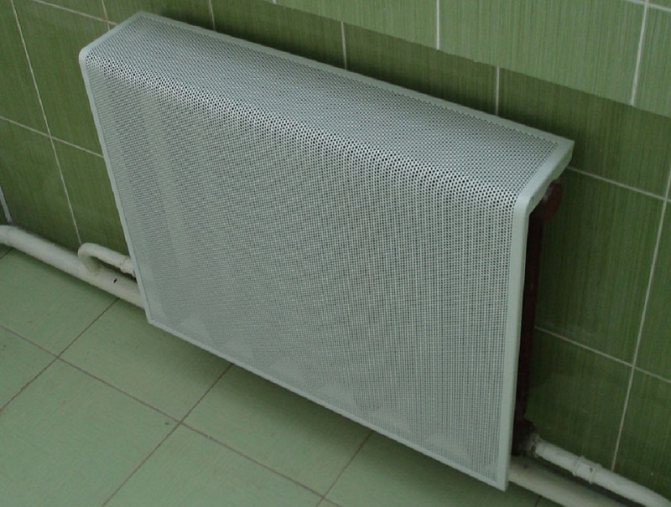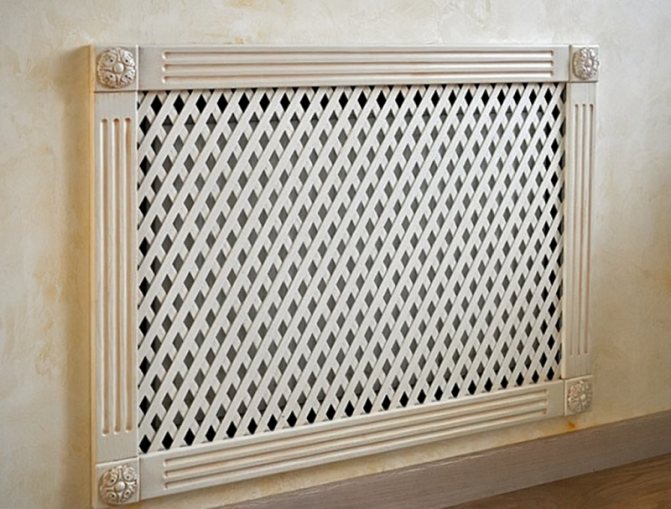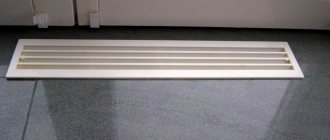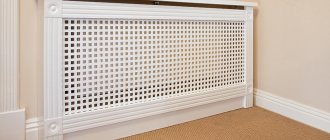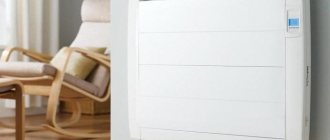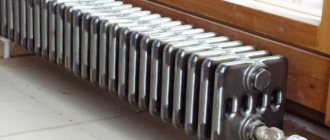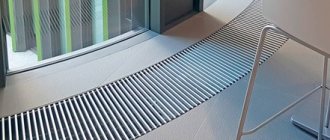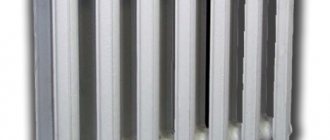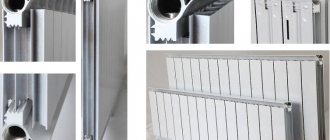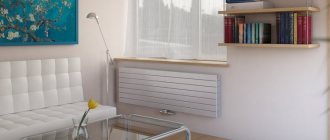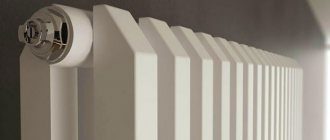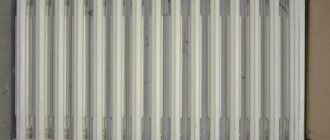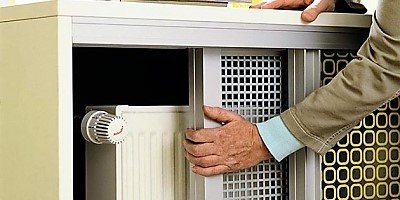
Difficult fit into the interior heating system radiators. Painting the batteries the same color as the walls or floors will not solve the problem.
Save the style of the room decorative lattices will help. Radiator screens easy to attach, do not block warm air and fit well into any design.
Odnoklassniki
Plastic
For the manufacture of protective screens, polyvinyl chloride with suitable characteristics can be used. Finished products can be either homogeneous or composite (in addition to PVC, the composition can include metal or rattan). The outer surfaces of plastic gratings are capable of imitating several types of coatings - wood, stone or metallic.
It should be noted right away that PVC has a small degree of thermal conductivity in comparison with wood and metal, so plastic grilles cannot provide full heat transfer to batteries. The conclusion is obvious - the use of such products cannot be called economically profitable, since an underestimated heat transfer always leads to an increase in heating costs.
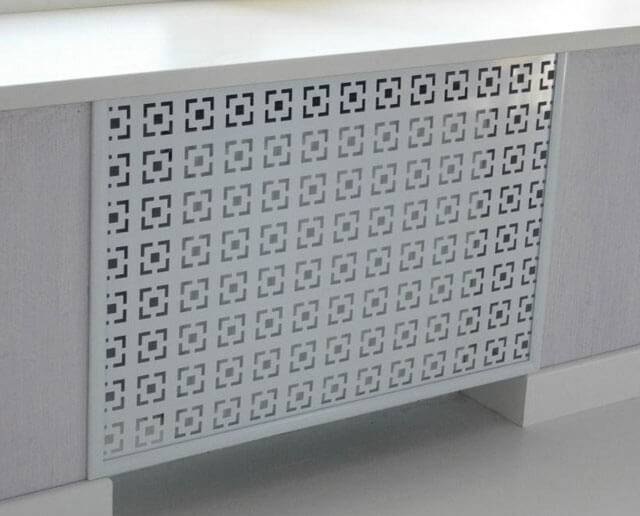

However, low efficiency is the main drawback of plastic grilles, but in other respects they are quite good. So, PVC products withstand high temperatures well, have a solid operational life and are completely safe. Moreover, such lattices have very good decorative qualities and can be used to decorate any style. And the last - the cost of plastic protective grilles and screens is much lower than all analogues.
How to buy a metal decorative ventilation grill for a windowsill in Moscow?
You either need to know the dimensions of the hole where the product is being selected (you can call the measurers from our company), or choose a suitable model of the lattice at the stage of manufacturing the window sills. We will recommend the best option for your case and budget and make a sketch that can be passed on to the window sill manufacturers.
All our convection grids for the windowsill are made strictly according to the client's dimensions.
If you have made a large order and want to control its execution, come to our production site - we do not interfere with this. You can visit the production several times, we have no secrets from our customers, on the contrary, we are proud of the opportunity to show the process of making small and dimensional masterpieces from metal.
How to reduce heat loss
When installing, you can apply some tips and reduce heat loss, save on heating and natural gas bills.
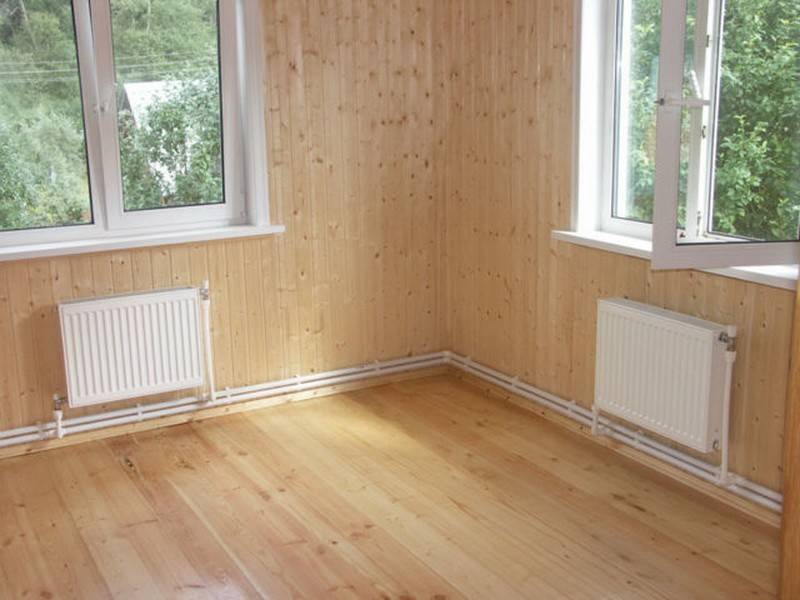

Attention! Batteries of the context type must not be covered with grills or other covers. Equipment can cause air outflow obstruction
The radiator may deteriorate.
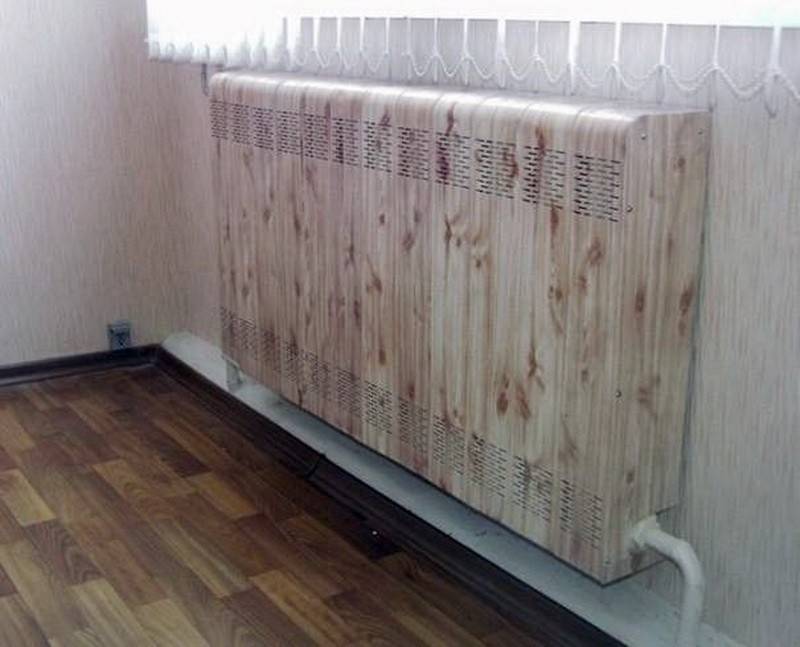

The following simple tips will help to increase heat transfer:
- Before installing the radiator grill on the window sill and the niche under it, you need to glue dense foil. It will help keep warm and enhance heat dissipation.
- Do not place furniture and other items close to the grate.
- There must be perforations on the body of the decorative strip. If it is not there, heat exchange cannot be restored.
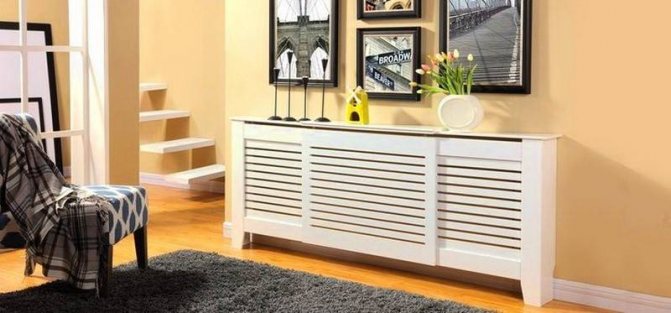

If the radiator is powered by an electrical network, it is prohibited to use it as a clothes dryer.
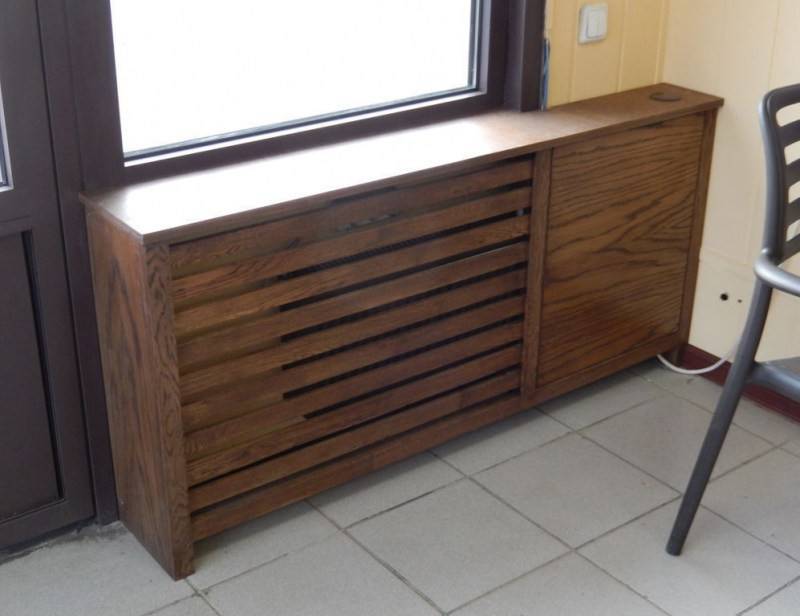

By choosing a decorative grille, you can not only improve the interior, but also reduce heat loss.The main thing is to consider the advantages and disadvantages of each material, and then make a choice. The subject should fit the general appearance of the room and not stand out in it.
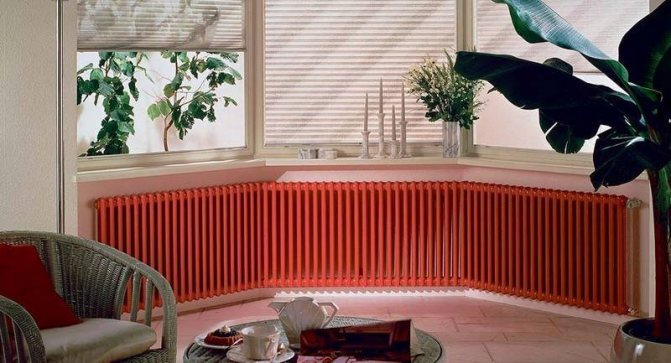

Stages and rules of installation
Do-it-yourself installation of the ventilation grill can be done in a plastic or wooden window sill - much more experience and other tools are required for installation in a concrete "board". Otherwise, the lattice is mounted in a concrete window sill in the same way.
Consider the nuances and stages of work for a plastic or wooden board and the same lattice. For work it is not necessary to remove the window sill... The direction of the slats (if the holes are slotted and the slats are set at an angle) should be towards the window.
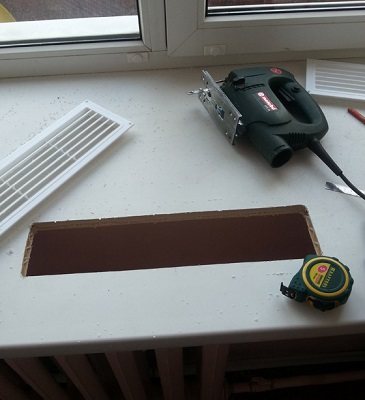

Cut-out hole in the window sill for the ventilation grill
Of the tools you will need:
Marking tool (marker, pencil).
Jigsaw or grinder.
Plastic adhesive (optional).
Any heavy object that can be used as a press (needed if the grate will stick).
The drill diameter of the drill must be larger than the width of the jigsaw blade (so that it can crawl through the drilled hole).
Stages of work (video)
Stages of work
The process itself looks like this:
The place where the lattice will be located is marked.
Holes are drilled in the corners.
A jigsaw blade is inserted into the hole and a landing hole is cut out under the grate itself.
The product is installed in the hole - for "trying on".
The edges of the hole are coated with glue.
The grille is put in place and pressed into place.
Glue extruded along the edges - removed.
Any heavy object is installed on top of the grill - as a press.
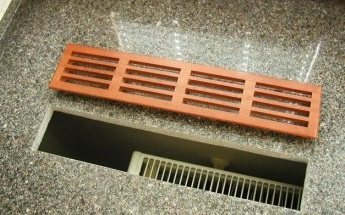

Opening in the window sill for installing the grille
Metal products (as well as some plastic and wood) are attached not with glue, but with bolts.
Using glue is not an ideal solution - in this case, the structure will turn out to be one-piece. If necessary (for example, if the plastic lamella breaks), the grating will have to be torn off from the surface.
The glue can be omitted if the groove is perfectly even: so that the grill “sits” in it tightly, without shifting. In this case, if necessary, it can be pulled out - for replacement, repair or cleaning.
How to make it yourself
First of all, you should choose the design format itself. If the battery is in a niche (alcove), a grille in the flat screen format will be appropriate for its fencing and decoration. Such a screen is always selected taking into account the real dimensions of the niche, and the installation of this product is in fact not too difficult.
But much more often the batteries are in limbo and are located under the window opening. In such situations, experts advise making a choice in favor of hinged radiator grilles.
Materials and tools used
Among the existing options for the manufacture of a flat grille for a radiator, the easiest and fastest are options from MDF or chipboard. Such a construction is quite simple to make. For this you may need:
- MDF or chipboard sheets, the colors of which will harmoniously fit into the existing interior;
- hacksaw;
- joiner's glue;
- sheet steel mesh, which will be used to install the front and two side panels;
- a sheet of metal to create a reflector;
- nails;
- screws, staples and possibly other fasteners.
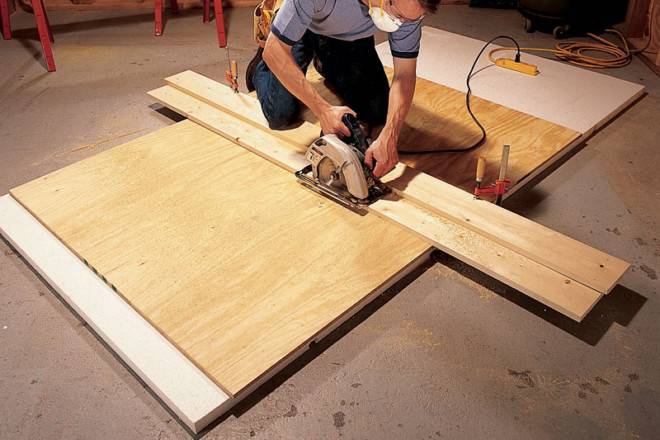

Of course, you can't do without a tape measure and a pencil. If desired, you can take decorative perforated MDF for the mesh.
Lattice making step by step
The manufacturing process for the radiator grill can be described as follows.
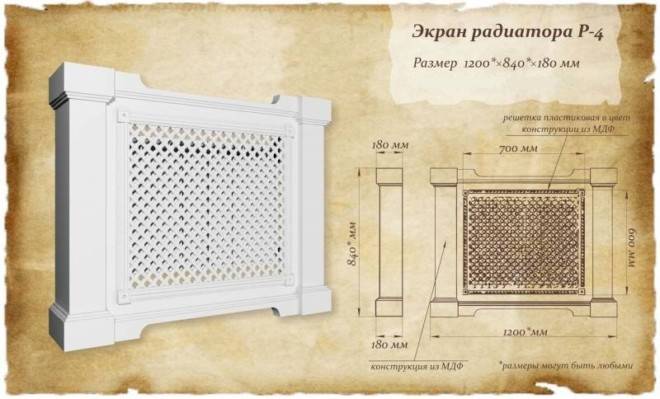

The height and width of the radiator are measured first. Then you need to add 10 cm to the width and 5 cm to the height.It is on the basis of the results obtained in this way that the front panel will be manufactured.
The depth of the radiator is also measured. Another 2.5 cm is added to the resulting value - this will be the width of the side panels of the future product.
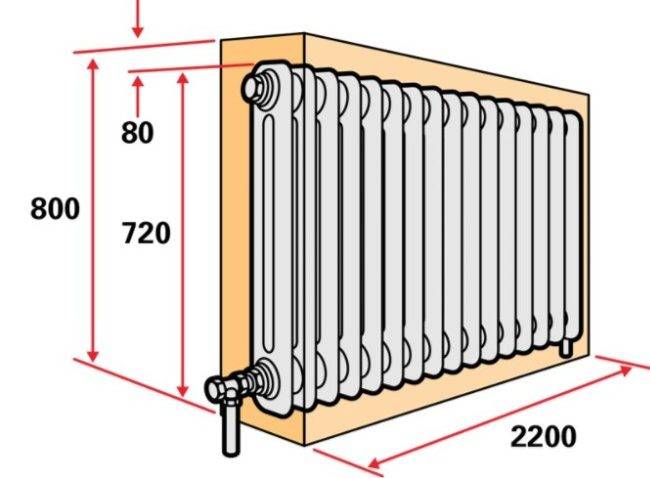

The dimensions of the screen cover are measured in exactly the same way (and all the same, its dimensions should ultimately exceed the dimensions of the sidewalls by a couple of centimeters).
After completing the measurements, you can start cutting the parts. To create the front profile, they take sheets of MDF or chipboard and cut out rectangular parts from them with a width of about 11 cm.And then, using a hacksaw, angles equal to 45 degrees are made in the contact zones.
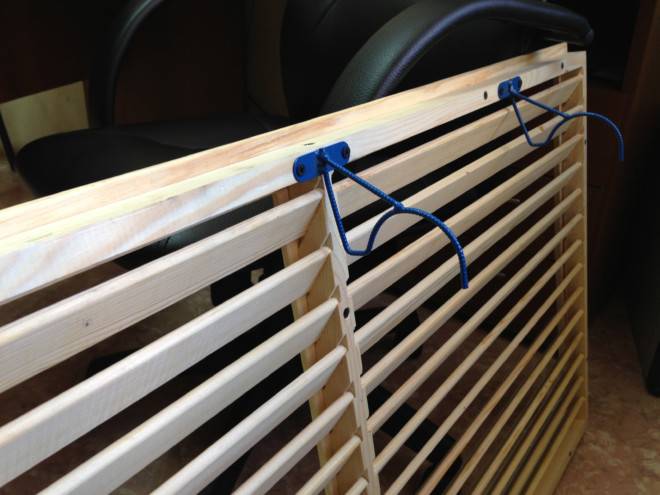

A metal reflector is installed against the back wall; its dimensions should be approximately the same as that of the decorative grille itself. This reduces heat loss, and infrared radiation from the battery will be redirected from the near wall to the middle of the room.
Then a sheet steel mesh is installed, which in this case plays the role of a frame, and the structure is assembled from the previously cut parts.
It is possible to attach a flat lattice not only to the frame, but also to anchor collets. However, this method, due to the need to purchase expensive parts, is not very popular among those who want to make a screen on their own.
Price overview
The easiest option is to purchase metal, plastic, glass or wooden gratings at a hardware store, hardware store or furniture store. You can also make an exclusive sample to order in a specialized workshop.
What determines the cost of gratings
The price of finished protective screens for radiators depends on the material of manufacture, size and finish.
| Material | Height and width | approximate cost |
| Metal | 400 x 600 mm | 800 RUB |
| 600 x 600 mm | RUB 960 | |
| 750 x 600 mm | 1000 RUB | |
| 900 x 900 mm | 1800 RUB | |
| Pvc | 600 x 300 mm | RUB 250 |
| 600 x 900 mm | 330 RUB | |
| 600 x 1500 mm | 490 rbl. | |
| Wood: oak | 600 x 1300 mm | 1053 RUB |
| beech | 600 x 1300 mm | RUB 936 |
| oak | 700 x 2500 mm | 2363 RUB |
| beech | 700 x 2500 mm | RUB 2100 |
| ash | 700 x 2500 mm | 1838 RUB |
| MDF | 400 x 600 mm | 1020 RUB |
| 600 x 900 mm | 1270 RUB |
Custom-made items will naturally cost more. You need to contact this service if the radiator has a non-standard size or you need to decorate it in a special way, for example, apply a photo print.
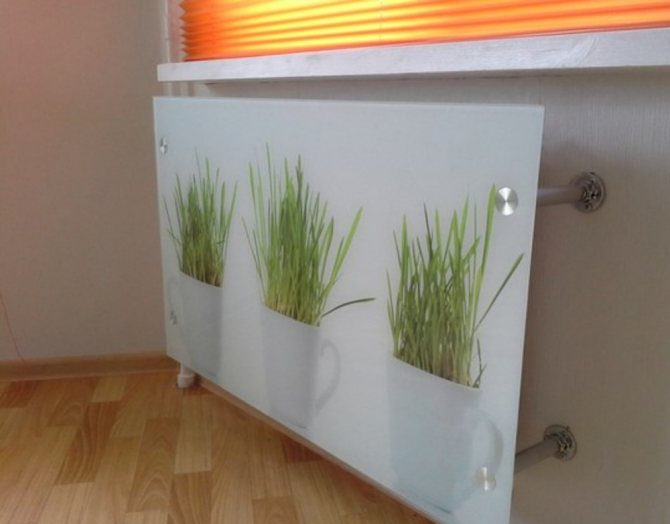

Tasks and materials
Most often, grilles for heating radiators are installed for decoration - not all heating devices look attractive, and the grilles are sometimes very beautiful. The second task often performed by battery screens is to cover sharp and hard edges. This is true in families with children, especially if old-style cast-iron radiators, such as "accordion", are installed. Their shape is thermally dangerous, and the view is unattractive, they will be appropriate only in loft-style rooms.
They make grilles for heating radiators from different materials:
- Metal screens for batteries are produced in large quantities. They are made from thin sheet steel, which is then coated with paint. For the most part, they cost a little, but they also look mediocre. The duration of operation depends on the quality of the paint. Powder enamels are preferable. They last longer and remain attractive for decades. From the point of view of influence on heating, metal screens for radiators are the best choice. The metal heats up quickly, and then itself begins to radiate heat. So the option is inexpensive (usually) and does not greatly affect the room temperature (in the presence of perforations).
- Forged lattices are very beautiful. But the forging is too delicate, therefore some kind of background is required, and often it is made in contrast to highlight the forged elements brighter. To ensure normal air circulation, it makes sense to make the "background" from a metal perforated sheet.
- Wooden grates and screens. Wood has always been and remains a premium material. The high plasticity of the material allows them to be made in different styles and shapes. And although there are inexpensive products made of wood, they look very good.But, as mentioned above, a radiator closed from all sides with wood transfers little heat to the room.
- MDF and HDF. For manufacturing, laminated sheet materials are used. It should be said that binders are not used in the production of MDF and HDF. The softened wood fibers are pressed, in the process lignin is released - a natural binder contained in wood. Lignin and glues fibers. So both of these materials are completely safe. If we know MDF products more or less well, then HDF is unfamiliar material for many. It differs from MDF only in terms of pressing. It is molded under a higher pressure, as a result, it turns out to be very thin (3-4 mm), but more dense and homogeneous. HDF keeps its shape well, because openwork grilles for heating radiators are often made from HDF. From the point of view of the effect on heating, they are slightly better than wood - the layer is thinner, the perforations are usually larger.
- Plastic. Plastic products are most often used in bathrooms and toilets. This material is the most hygienic, it can be washed an unlimited number of times. For manufacturing, heat-resistant plastic is used, which is not afraid of heating up to 60-80 ° C. If the grill slats are installed at an angle, as in the photo, the heating will work efficiently. Air flows through the slots unhindered. It all depends on how the cover is made.
- Glass screens for radiators appeared several years ago. They are not ideal in terms of heating, but they have an attractive appearance. They are made of special tempered glass, matte or apply a pattern.
Used in the manufacture of decorative radiator grilles and more exotic materials. For example, bamboo and rattan. Such products are more demanding for interiors and are not common.
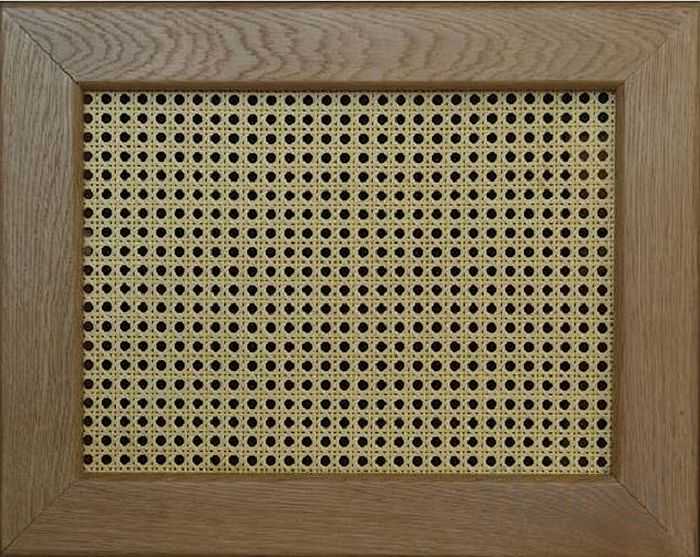

Rattan screen on wooden frame
There are also combined grilles. Most often there is a wooden frame on which some kind of decorative mesh is stretched. Bamboo and rattan braids are most often attached to such a frame. MDF and HDF panels are usually mounted on a wooden frame.
Choice of installation site
The location of the convection grill for the battery is very important because the successful operation of building structures and elements of the heating system depends on this. The main criteria for the correct installation of such equipment are the following rules:
- the grill is installed directly above the battery;
- the size of the product (its length) must correspond to the length of the heating radiator;
- if possible, the lattice should be moved as close as possible to the plane of the window opening.
In addition, the location should correspond to the style of the room where the installation is performed, complementing or focusing on this finishing element.
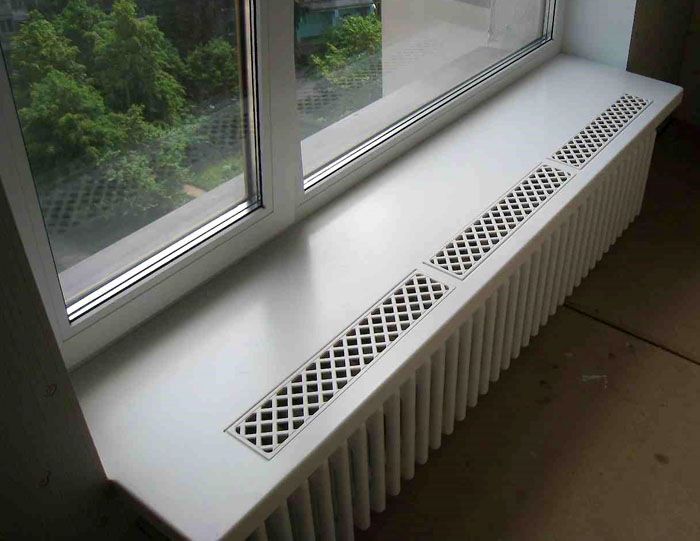

Using several separate products to frame ventilation openings on a large window
Fixation features
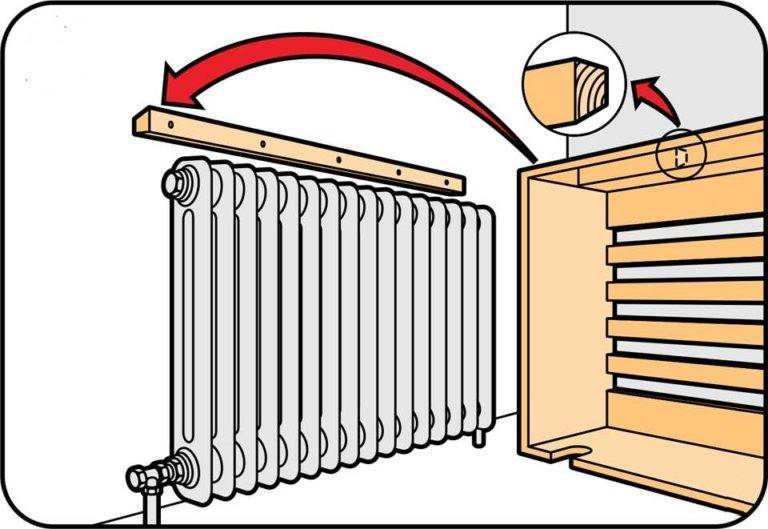

Fastening the screen box for the heating radiator on the wall
The main requirement for radiator grilles is the ability to quickly access heating devices and pipes. This is due to the need to periodically clean the heating elements from dust and dirt. We recommend cleaning twice a year. Also, there are emergencies in which the master must have easy access to the failed section.
It is important to think over such a fixation system in advance so that you can easily remove the screen if necessary
Hinged and side-mounted screens meet this requirement. They are removed in a few seconds and set up just as quickly. Problems arise with flat and covering radiators, as well as boxes. It is recommended to mount such models to the wall on two strips - one on the box, and the other on the wall. The top edge should be chamfered towards the lattice.When installing the grille, this part acts as a lock, which is easy to remove if necessary.
There is also another installation option. You can put metal elements (for example, plates) on one bar, and magnets on the other. Then there will be no problems with removing and installing the grilles.
Flat screens can also be fixed with hooks or loops. It is simple to make them, but it can be difficult to install with falling into the loop. Sometimes they also put a decorative version of grilles with sliding doors.
Battery Screen Purpose
This versatile decorative element can be used for a variety of purposes. The market offers consumers a variety of models of gratings made of metal, glass, wood, MDF, plastic and other materials.
The radiator grill performs the following functions:
- Protection... The design of the screen of any model ensures that the heaters are protected from dirt and dust.
- Decorativeness... Using this element, you can cover up old batteries that work great but have an unattractive appearance.
- Safety... Grilles and boxes will reliably protect children from burns in contact with the coolant.
A stylish grill for a radiator is in demand when decorating residential and office premises. It allows you to reach a compromise between the aesthetic and practical side of the issue of organizing heating.
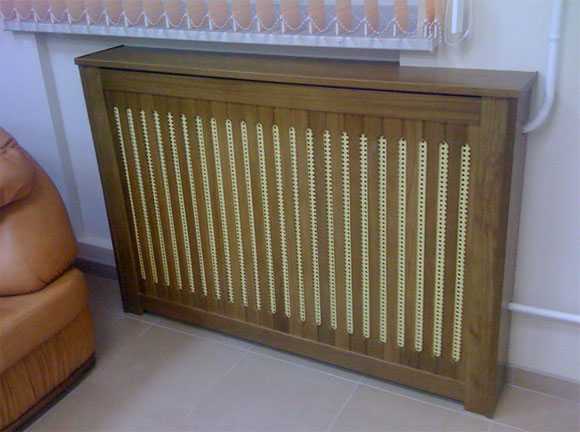

The best way to refine cast iron batteries is to install a radiator grill, the purchase of which does not require significant financial investments.
Battery screens are a robust design that can add flavor or enhance the sophistication of your interior design.
Regardless of the model you choose, you will certainly appreciate the benefits of using a radiator grille:
- It allows you to save on heating, ensuring an even distribution of warm air flows throughout the living space.
- Reliably protects children and other family members from accidental contact with the hot radiator, eliminating the possibility of getting burned.
- Serves as a stylish interior decoration, accentuating element or supports the overall design concept.
- A wide range of screens for heating radiators of different sizes, shapes and designs allows you to choose the best option for a room for any purpose.
- If it is necessary to update the interior, the homeowner can quickly replace the old grille with a new one.
It is worth noting that the installation of a stylish decorative screen does not at all affect the technical characteristics and properties of heating devices.
Due to the slots, which are available in most structures, the convection of hot air increases and the heat is evenly distributed over the area of the room.
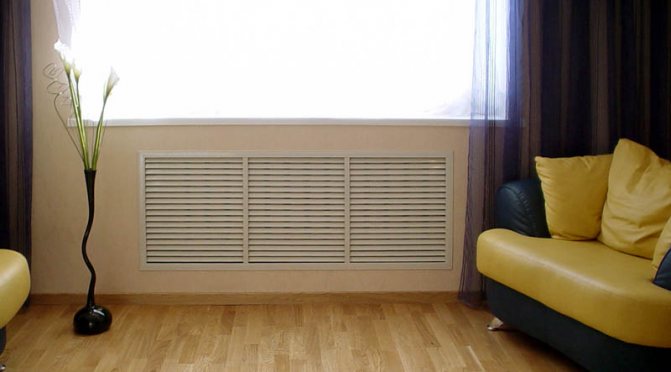

Radiator screens are in high demand as they allow you to hide the heater and improve the interior. The main condition is to choose an environmentally friendly, durable and easy-care material
Decorative screens made of wood
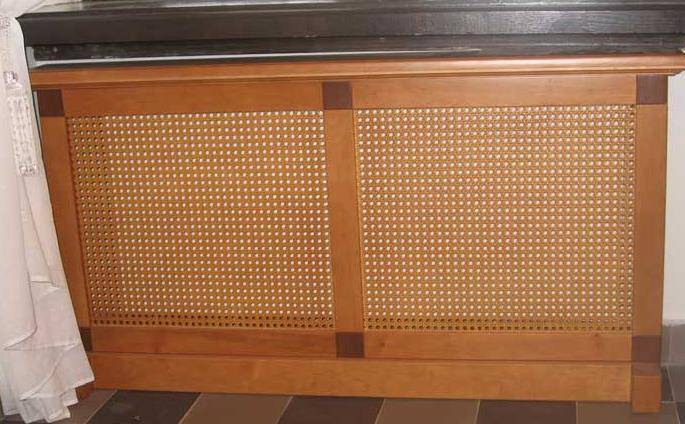

Made of wood
Wooden, put on radiators, are made from solid wood and exclusively on order.
They go well with the most diverse, even exclusive decor elements made in the same style.
The main disadvantage of wooden decorative fences for batteries is the ability to deform and dry out with strong temperature changes and even slight fluctuations in humidity.
In order to minimize this minus as much as possible, manufacturers use only high-quality wood for the manufacture of such screens, which, it should be noted, ultimately determines the price of the product, which is quite impressive.
Handicraft is also highly valued today.Wooden decorative screens for batteries will be happy to make to order by master cabinetmakers, but this pleasure, for obvious reasons, will not come cheap.
But do not forget that only such designs will help to withstand all the severity of the classical style or the elegance of the country style.
Decorative grilles made by the weaving method also look great on batteries. They bend perfectly, and therefore, if desired, you can give them a beautiful curvilinear shape.
Worktop grates with flat front panel and flanged edge
The most common type of grates in window sills and countertops. Decorative grilles with flanges are a more complex welded structure. Flanging - the rear part of the grille (stiffening board), inserted into the mounting hole. The flanging gives the lattice rigidity and flatness. It also visually hides the cut of the window sill or countertop, which is visible in flat gratings through the holes in the ornament. The flanging also allows for concealed fastening of the grille. And among other things, a mesh-backing is attached to it, if necessary.
Screen manufacturing materials
When choosing battery grids, take into account the type of material. Not all types of such structures effectively absorb heat.
You should pay attention to such a parameter as thermal conductivity. In addition, other properties are being studied: the temperature of the radiator heating; susceptibility to temperature extremes
Considering that such a structure is regularly exposed to heat, it is recommended to purchase environmentally friendly products. This is due to the ability of some materials to release harmful compounds into the environment.
Metal grilles
Products of this group are presented in different types: simpler, classic, carved. Metal grilles on heating radiators are installed quite often due to the good heat transfer of the material. This allows them to conduct heat without affecting the efficiency of the battery or the entire system.
Metal structures are easy to clean. It is permissible to color them repeatedly, changing the shade. The front panel can be mesh or perforated. Moreover, the shape of the holes changes depending on the wishes of the customer. The advantage of such products is their long service life and durability. So that the structure does not injure the residents, it is attached to the wall.
The metal is heat resistant. It is resistant to temperature extremes, can be heated and cooled repeatedly. Products from such material belong to products of the middle price category. It is recommended to use structures with a metal thickness of 1 mm. This is sufficient to ensure good thermal conductivity of the screen. Moreover, in terms of strength, such products are not inferior to analogues from other materials. The disadvantage is the complexity of self-assembly, since the welding method is used.
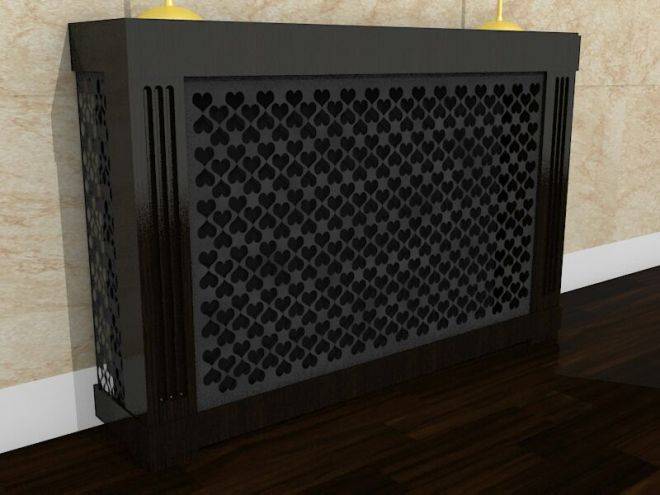

Wood grates
It is an environmentally friendly material. When heated, it does not emit harmful substances. Wooden grilles for heating radiators will successfully fit into any interior. They are represented by a wide range of models. More often they use lattice screens of simple design. Wooden products are not strong enough, therefore it is recommended to use the option with shelves, which in this case will function as stiffeners.
Plastic pads for radiators
PVC gratings are made of polymeric material in whole or in part. In the second case, plastic can be successfully combined with metal, rattan. The advantage is the ability to decorate for any texture: wood, natural stone. Plastic grilles are cheaper than metal and wooden counterparts.
Such designs are lightweight, easy to maintain.They do not absorb moisture, do not deform under the influence of moderate temperatures, and do not emit toxic substances. However, all these properties of the material are retained provided there is no direct contact between the plastic and the heat source.
The main disadvantage of PVC products is low thermal conductivity. In other conditions, this property could relate to advantages, however, if there is no goal to reduce heat loss, then a low thermal conductivity is the reason for the delay of warm air flows. This contributes to a decrease in the efficiency of the batteries, leading to excessive fuel consumption.
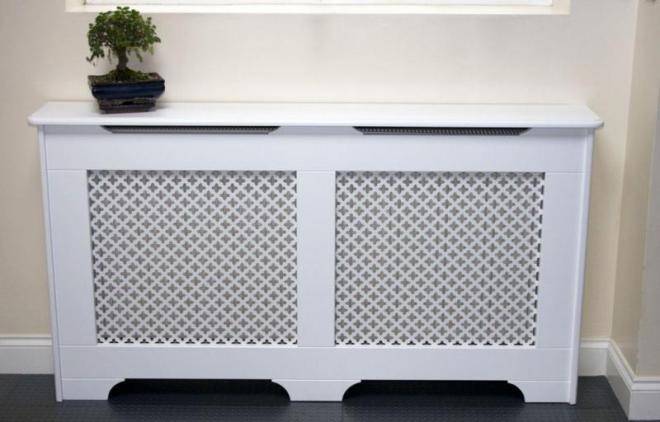

Glass screens
They are distinguished by their durability, since they are made of tempered glass with a thickness of up to 8 mm. This prevents damage due to mechanical stress. Such screens are notable for their attractiveness, they fit well into interiors of various styles due to their minimalism in design.
Glass grilles for heating radiators differ in size, color and material thickness. The fasteners are installed on the corner sections of the screen. The disadvantage of such products is the lack of holes. Heat is removed from 3 sides: from the battery upwards and from the sides. This contributes to a decrease in the efficiency of the heating system.
HDF and MDF box
Chipboards are affordable. They provide the ability to imitate wood, so products from this material look attractive, they fit well into any interior. The advantage is the low sheet thickness. In addition, the decorative lattice made of MDF is represented by a large assortment of models with excellent patterns.
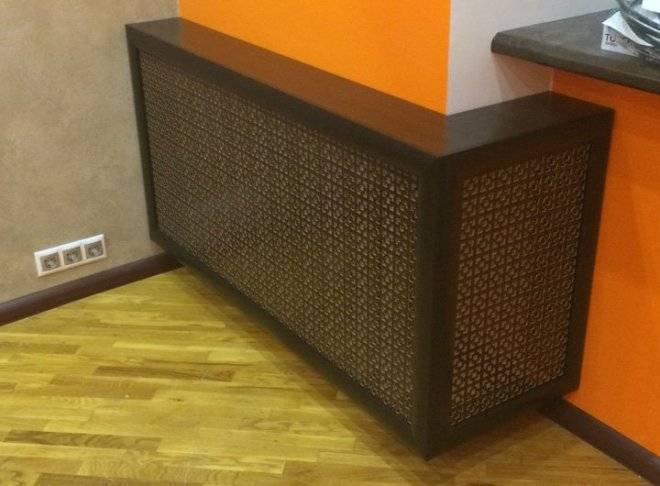

Why are metal grates most popular
Most often, batteries are hidden behind decorative metal panels. This can be explained very simply. The metal itself is a good heat conductor. Heated from the radiator, it transfers heat to the room, thus ensuring its maximum heating.
In addition, metal screens are not very expensive. They lend themselves easily to transformation: if the design of the room is changed, then the metal grill can be easily repainted.
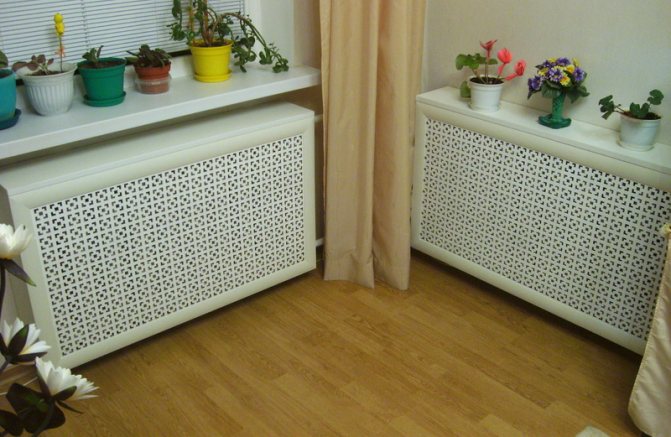

Humidifiers for cast iron batteries
Creating a comfortable microclimate is not only about warmth and comfort. If the air in the room is dry, then this is unlikely to be beneficial to health. The easiest and most artisan way to improve the situation is to install humidifiers for cast iron batteries.
Their design is simple - they are small containers with a volume of up to 0.5 liters, with special holders for which they are suspended from the radiator. Ceramic is generally the best material for humidifiers due to its ability to heat up quickly.
For the intensity of humidification, you can buy a container in which the inside is divided into small sections. Water in small quantities warms up and begins to evaporate faster. The stores sell both individual ceramic, plastic or metal humidifiers for batteries, as well as whole compositions that give designs an elegant and stylish look.
Cast iron batteries can be made beautiful, powerful, and a useful piece of furniture. There would be a desire and time or money, even from old Soviet radiators, effective and stylish heat sources are obtained.
Advantages of convection grilles for windowsills
The presence of ventilation grilles for heating batteries installed in the window sill has a number of indisputable advantages that provide an optimal microclimate in the room where they are installed. In addition, the following indicators should be attributed to the advantages of their presence:
- natural ventilation in the room improves;
- the issue of preventing the formation of condensation in the window opening is being resolved.
The advantages of such products can also be considered:
- versatility of the installation method and ease of installation work;
- variety of shapes, designs and colors;
- ease of use and maintenance;
- affordable cost for models made of plastic.
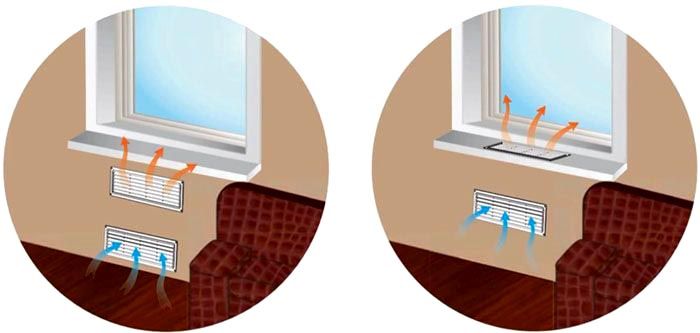

Convection grilles can be installed in different ways, depending on the materials of the enclosing structures, the style of the room design and the user's personal preferences.
Why are there grilles on the radiators
The grilles prevent human contact with too hot batteries (especially for old cast-iron modifications), protect against possible bruises on sectional ribs or protruding metal plates of convectors
It is also important that the grilles, in principle, make it difficult to access the radiators, and this reduces the risk of careless and careless handling.
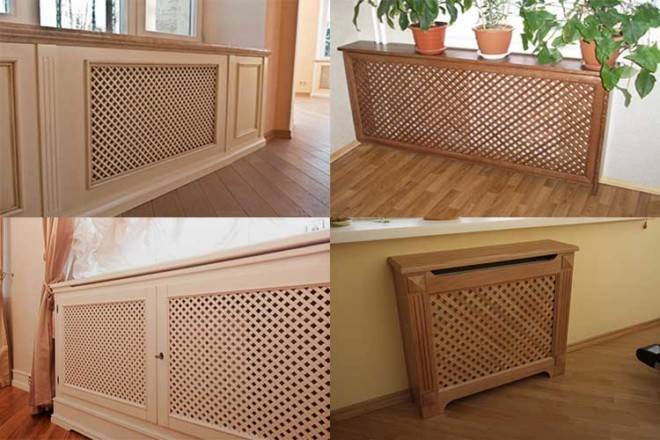

Also, the radiator grill resists dust accumulation in the batteries. Dust particles that settle on the hot battery and gradually decompose under the influence of significant temperatures fill the atmosphere of the room with decomposition products. It is harmful to the health of people living in the room (especially harmful to allergy sufferers and those with asthma). But in the presence of a lattice, it is she who takes everything upon herself - as a result, the dust undergoes decomposition to a much lesser extent. And in order to prevent an increase in the concentration of dust, the grate should be periodically washed or cleaned with a vacuum cleaner.
Another possible purpose of the grates is to make heat transfer more intense. There are schemes for installing lattice screens with different thermal efficiency. A well-designed and placed enclosure can significantly increase the heat dissipation of the battery.
Grates in stock
Flat steel lattice in the window sill with painting
Stainless steel grates 2mm thick for the worktop
Slotted grates in the window sill
Stainless steel louvred grilles for worktops
Steel grilles with an overlay frame and edging, white for windowsills
Lattices made of aluminum 2mm for the worktop
You can familiarize yourself with the assortment in more detail and buy grates in the window sill and countertop in stock in the STORE section.
Dimensions (edit)
The dimensions of the finished grilles are calculated based on the dimensions of a standard central heating coil, namely:
- 30 * 60 mm;
- 60 * 60 mm;
- 90 * 60 mm;
- 120 * 60 mm.
Products in these sizes can be purchased ready-made. If the radiator parameters do not correspond to them, the decorative grille will have to be made to order, for this you need to remove the dimensions from the radiator and determine the required color in advance.
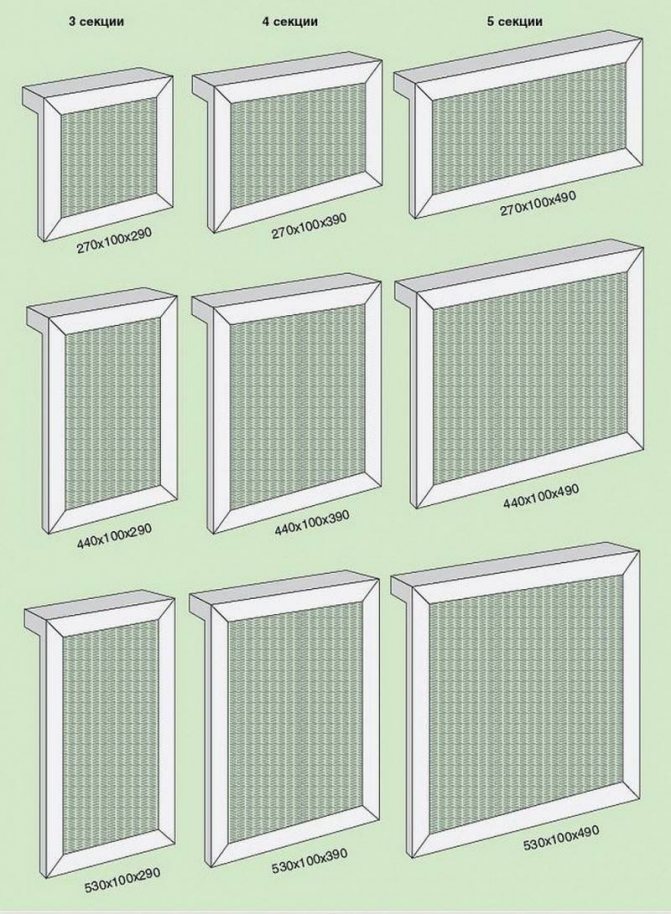

The price depends not only on its size and materials. A custom made item costs more than the classic one. It is interesting to note that wooden linings are rarely seen ready-made in stores. Manufacturers claim that the demand for them is low, and the price is high, so they are rarely ordered as samples.
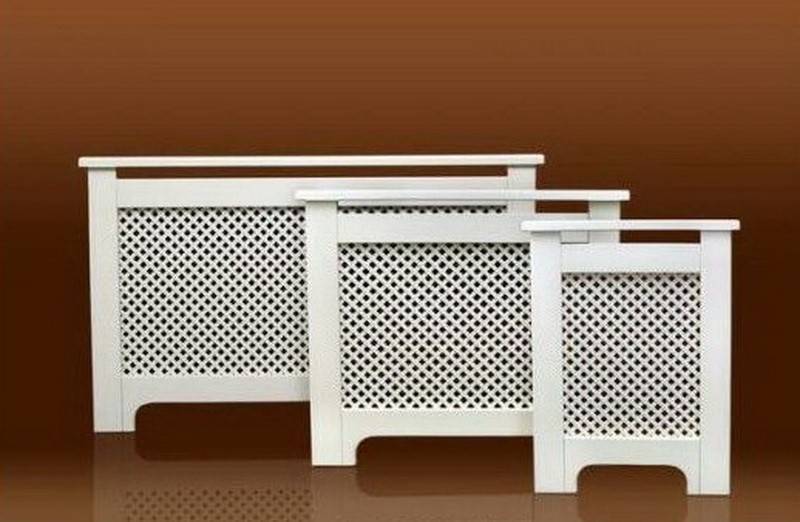

Ventilation grilles in the windowsill
Decorative grille for ventilation in the window sill is designed for convective air flow from the heater. Such a product does not require a large cross-sectional area of the pattern. It is possible to use a base of perforated steel or fine brass mesh in yellow or black - it will hide the look of the radiator and help the accessory look like a beautiful decorative panel. Grilles for radiators in the windowsill are quite popular today. And we present you our extensive catalog, although our possibilities are much wider: we can implement almost any of your ideas or offer our own non-standard idea.
Monolithic as a bar, a narrow lattice with two slots was needed for installation in a convection outlet.
The patterned grill with a warm golden surface has become a classic example of our workshop. Lat ..
The lattice is made according to the classic pattern of the lattice in the window sill that has already become in our workshop. Prod ..
To decorate the kitchen windows, the craftsmen created two lattices with an elegant Majestic ornament and added ..
Painted lattices with openwork floral patterns are made of ordinary steel and covered with a matte finish.
The patterned grill with a warm golden surface has become a classic example of our workshop. Lat ..
The flat lattice for the window sill is made of aluminum and decorated with varnish and paint similar to brass with a ...
The grates for the windowsill are made in our workshop from natural brass with a thickness of 2 mm. Construction ..
Long satin-brushed steel ventilation grill for kitchen countertops.
The sanded surface of the grill is silk to the touch and is pleasant to touch. Thanks to the applied ..
Flat brass grilles with minimalistic slotted patterns are designed for convection decoration.
The flat brass window sill grate with a warm matte sheen accentuated the light artificial look.
A batch of brushed aluminum grilles for hallway window sills with white walls and marble walls.
A narrow lattice with only two horizontal holes will laconically decorate the windowsill. Sanded by ..
In this design project, the masters were faced with the task of creating laconic lattices for the kitchen. Lattice you ..
Existing constructions
Decorative grilles for radiators differ in size, shape, design, material and other indicators. Before choosing, you need to determine the purpose of the subject. Designers recommend not to make it visible. It cannot be a key element in the interior; it must be used to support the style.
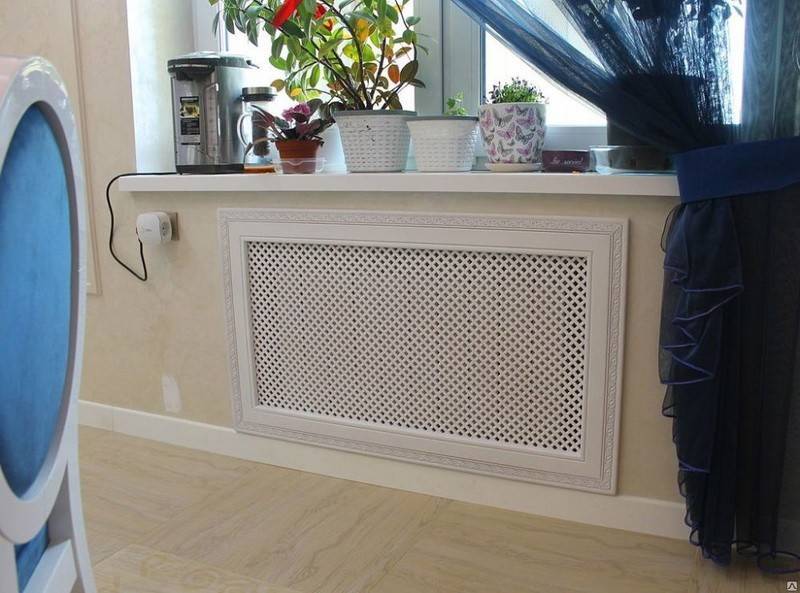

In stores, you can find designs of three types:
- Flat or front cover plates. It is advisable to use them if the radiator is embedded in a niche. The product is in the form of a flat frame with a crate. The overlays are square and rectangular in shape. A significant design flaw in the complexity of installation. The facade screen is installed with an overlap on the wall, taking care that the battery does not protrude beyond its borders.
- Hinged ones are often used to hide old cast-iron batteries, in the form of an accordion. It is difficult to attach them to conventional bimetallic radiators. The hinged pad is attached to hooks or applied to the extreme edges of the battery.
- Protective box. This option is the most difficult to install and manufacture, but buyers often choose it because of its practicality.
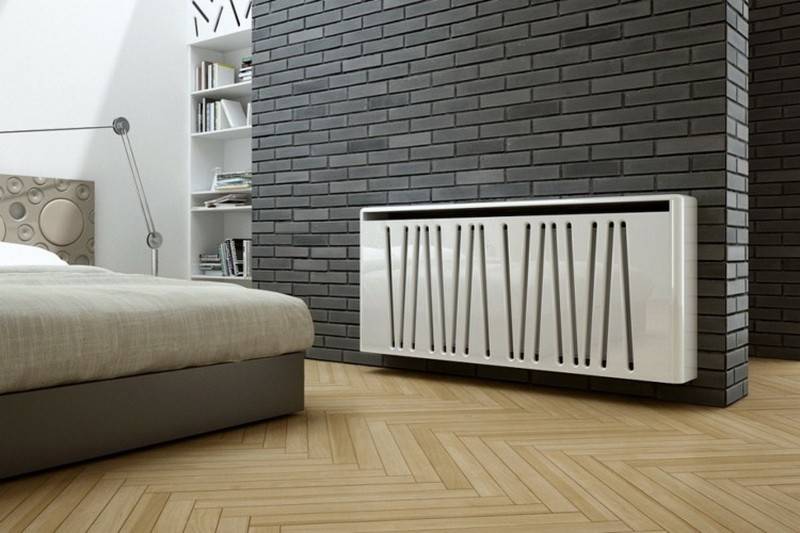

A video review will help to understand the types of design solutions.
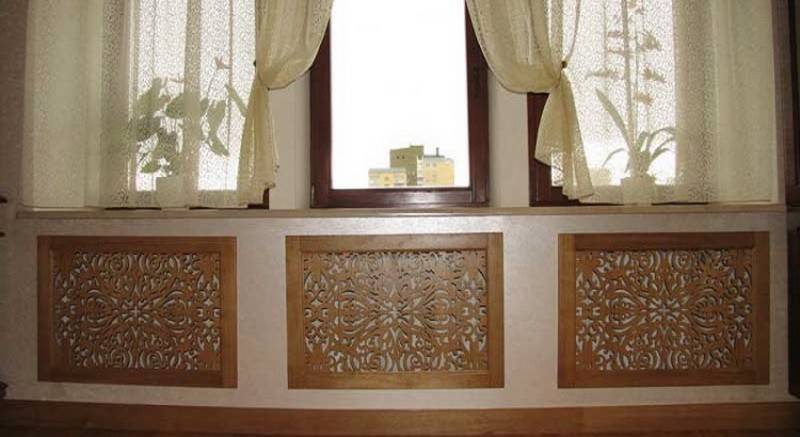

Types of protective grilles for radiators
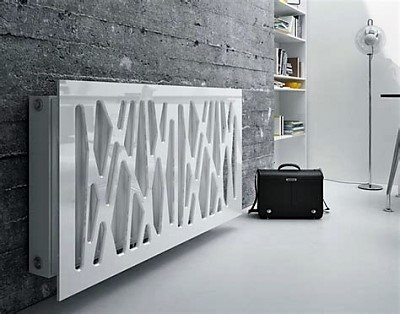

When choosing a decorative lattice for your apartment or house, the product design is taken into account. Distinguish several typical models:
- flat;
- hinged without cover;
- hinged with a cover;
- attached.
Are selected for individual design features premises, depend on the location of the radiators and their shape.
Flat
The simplest in design screen models. Suitable for decorating radiators that are installed in a niche under the windows. A prerequisite is the presence a large number of holes for the passage of warm air. Otherwise, convection is disturbed, and the radiator loses its main purpose.
Fastened flat lattices to the side sections of the niche wall, top or bottom. Manufactured made of thin material, which easily allows heat to pass through and is practically weight-free.
Hinged without cover
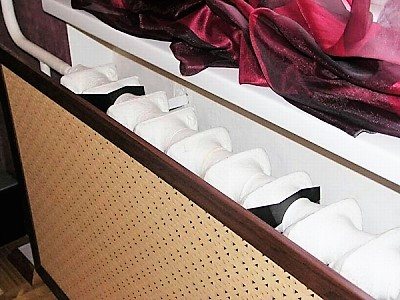

Hanging structures are easy stacked on top of the radiator... The model without a lid has a more open type and is suitable for decorating batteries located in a niche or standing separately from the wall plane.
The lidless design has a major plus - warm air circulation after decorating the battery is not broken. The heat rises upward, and the cooled air descends. If the screen has a top cover and sidewalls, then they retard natural convection.
Hinged with lid
Hinged models with a cover have completely closed construction... The cover on the top and side walls completely hide the radiator from prying eyes. The big disadvantage of such models is that when calculating the size of the fastening element for the radiator, it is necessary to additionally take into account the weight of the decorative screen.
Mounted models can can be attached independently to the wall using load-bearing bolts or clamps... But during repairs and general cleaning, it will be more difficult to remove the screwed structure.
Side-by-side with wooden ribs
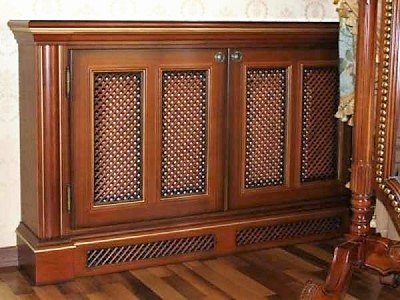

Freestanding add-on model of a decorative grille looks pompous, but suitable for any type of battery... Despite its stability, such a product has sufficient heavy weight.
The plus is that during installation there is no need to break the integrity of the wall... The structure is placed at any distance from it. For greater stability fasten to the floor... A screen of a box, walls and stiffening rib are assembled from durable material - timber.
Side screens have the most complex structure... In some models, opening front walls are provided so that the entire box cannot be dismantled during cleaning.
Features of use and influence on the heat transfer of batteries
With radiator heating of rooms, the air moves in a circular motion around the room - cold air masses come into contact with the heat exchanger at the bottom and, after heating, rise up along its plane. In this case, the larger the contact area of air masses with the radiator surface, the faster and more efficiently heat exchange occurs and, accordingly, the air in the room is heated.
Based on the direction of circulation of air masses, the correct design of the radiator screen becomes clear - it must provide air access to the lower part of the heat exchanger and have an opening at the top for unhindered flow to the outside.
Since any protective or decorative screen on the radiator, due to its design, to one degree or another interferes with heat exchange, cutting off the air masses in the room from contact with the heat exchanger surface, certain factors must be taken into account to increase the heating efficiency.
Placement options for radiators in the room
If we consider the materials for the manufacture of screens, then they can be conditionally divided into varieties with high thermal conductivity (aluminum, steel, glass) and low (wood, polymers, synthetic fabric materials). The air masses located behind the screen in the area of the radiator have a significantly higher temperature than the general one in the room due to the fact that they are cut off from contact with air by the panel of the radiator grille.
If the screen is made of materials with low thermal conductivity, then heat exchange between the air in the near-radiator space and the room will not occur and the heating efficiency will decrease. When using materials with high thermal conductivity as a radiator grille, the screen will be heated by the air behind the battery and transfer its heat to the room - as a result, the heating efficiency will be much higher
Therefore, in order to avoid unjustified heat losses, which is especially important in private houses with autonomous heating, it is more rational to use metal screens for a heating battery with high thermal conductivity.
Metal screens
Purpose of decorative grilles
A well-chosen protective grille should not disturb the harmony of the room. Its task is to become an excellent stylistic addition to the interior and an effective camouflage tool behind which an unaesthetic battery is hiding.
The functional purpose of the radiator is to heat the room. Therefore, the protective shield should not impede efficient heat transfer.
If this element retains heat, then the room will become cold, and additional heating sources will have to be used, and this entails an increase in utility bills.
But you can choose a grid of such a configuration, which will not only hide the battery, but also increase the flow of heat into the room.
In addition to hiding the surface of the battery, the decorative grille has protective functions. First, the shield protects the heatsink from dust and dirt. Secondly, it doesn't get as hot as the battery. This means that you can touch it without fear of getting burned. This is especially important for families with children or pets.
In addition, the screen can be quickly dismantled for the purpose of preventive maintenance, repair or replacement of the heater.
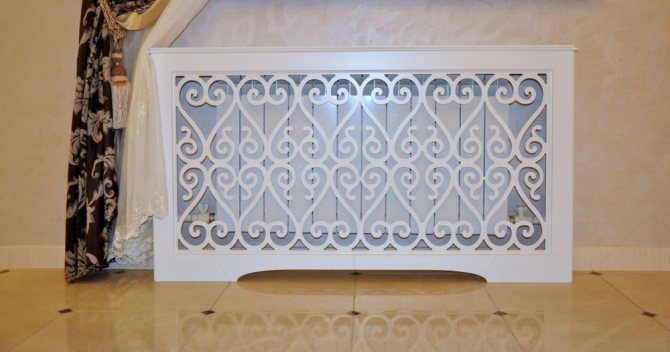

The principle of operation of the radiator and the requirements for the screen and grille
When it is planned to install lining on heating devices, it is necessary to provide 2 possibilities:
- free passage of heated air in the direction from the radiator into the room, for this, the grilles for the heating radiator should not have an upper shelf, due to which the heat will first pass upward, and then be distributed throughout the room;
- ensuring the possibility of the return of infrared radiation from the battery - to the air space of the room, this is realized through the use of hinged decorative grilles on the heating radiator.
The described processes occur when the battery is heated. Heating devices most often operate on the convection principle, but they can emit infrared rays. The change in the method of heating the air takes place without human intervention. This process depends on the operating conditions: room temperature, the design of the heater, and also on the presence of interference. For example, if access to the battery is blocked (by furniture, curtains), the radiator switches to infrared radiation mode.
Screen requirements:
high strength: such structures are often installed on heating devices in order to prevent injuries when falling and hitting a metal radiator, therefore it is important that the canopy is reliable, but at the same time safe; decorative grilles installed on the battery should be easy to maintain, this need is due to the principle of heating the room: cold air flows rise from below, while they pick up small dirt and raise them, as a result, dust particles settle on the screen elements, which means it is important to choose designs that can be washed.
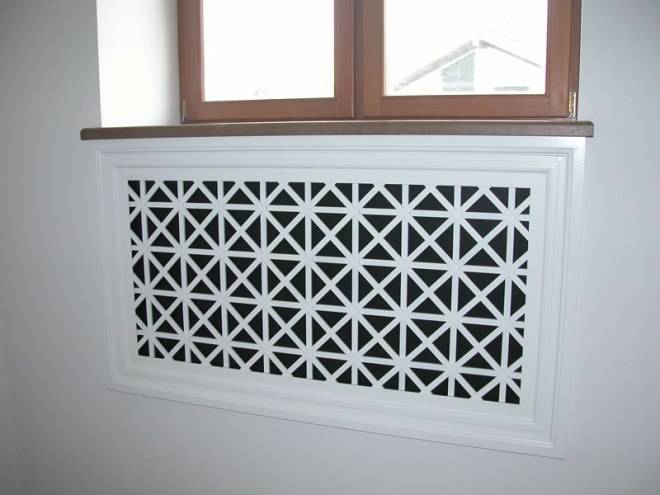

Combination of physics and design. A little about heating technology and battery grids
When considering radiator grilles, it is necessary to take into account their properties, design subtleties and even color.
First of all, attention is paid to the type of material and its ability to conduct heat. When heating a room by means of infrared radiation, the surrounding objects are first heated, and only then they give off heat to the air
This means that the screen installed on a cast-iron battery or an analogue made of another material must be characterized by sufficient thermal conductivity.
If the inside of the radiator screen is uncoated, it is recommended to paint the surfaces on this side with a dark paint on your own. Moreover, it is necessary to select a heat-resistant composition. This is because the panel is regularly exposed to heat. The coating on the inside will peel off if the material is not suitable for the properties under the operating conditions.
Heat reflective wall shielding
When the battery heats up, the heat spreads in different directions. This contributes to a decrease in the efficiency of heating devices. If a grill is installed on the battery from the side of the room, it partially reduces heat loss due to a dark coating.However, the heat will warm up other surfaces: the wall, the fasteners used to fix the radiator, etc.
You can prevent the reduction of heat loss by installing a protective panel or shield. It must be located on the side of the load-bearing wall under the windowsill.
Moreover, it is important that the coating of this panel is heat-reflecting (foil). The most suitable option is foamed thermal insulation
This will greatly increase the efficiency of the heating devices.
The insulation is installed with a heat-reflecting surface from the side of the room. Heat energy will be reflected from the foil material. In this case, it is redirected towards the room, which speeds up its heating.
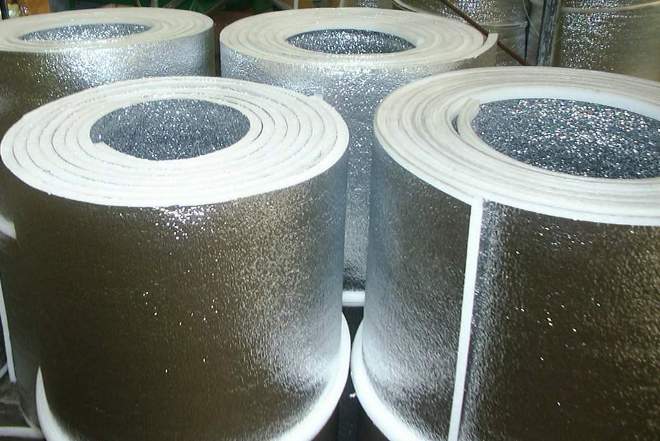

What to look for when choosing a screen?
When choosing a grill for a battery, it must be borne in mind that it not only closes the heating device and successfully performs a decorative function. In addition, it significantly reduces the heat transfer of the heating device installed in the room.
Depending on the properties of the model, heat transfer can be reduced by 5, 10 or 50%. Therefore, when choosing a screen, it is important to take into account the heat transfer parameters. And during installation - provide free access to the radiator valves.
This will allow you to regulate the temperature of the heating equipment at the beginning and at the end of the season, as well as drain water if air gets inside when starting the heating system.
Fastening decorative grilles should provide quick, free access to batteries and communications. Since it is necessary to regularly carry out maintenance of the latter, clean it from contamination. Sometimes emergency situations can arise.
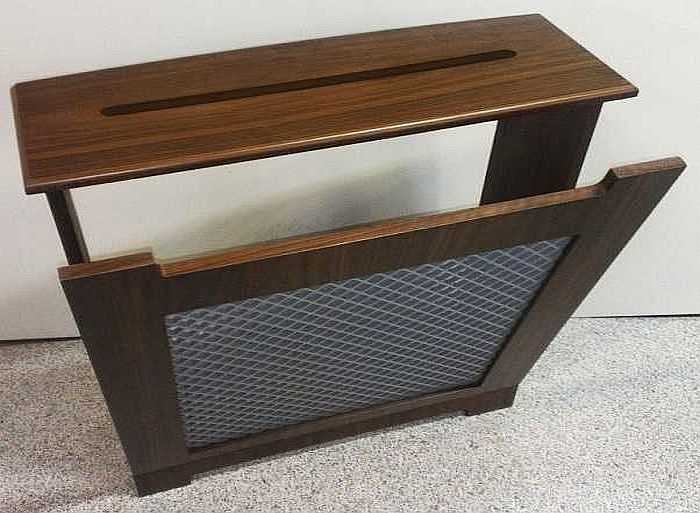

In order to be able to dismantle the screen in one motion in the event of an accident, it must have an open end. Closed boxes should be easy to remove or open
Any kind of radiator emits the maximum amount of heat on the surface of the top element. Therefore, it is recommended to choose a grille with a small top bar. This will minimize the loss of thermal energy.
The cover-box covers the heating element from 4 sides, making it difficult for air to circulate. Therefore, products of this type are considered not the best option for the quality of heat transfer.
When choosing a material for making a lattice, you need to pay special attention to environmental friendliness and safety - after all, decorative screens are exposed to constant temperature effects.
Therefore, it is better not to take suspiciously cheap and low-quality plastic - it can emit harmful fumes.
The most environmentally friendly material is wood. You can make a unique decorative radiator screen out of it with your own hands.
We also recommend reading the article where we talked about other ways to decorate heating radiators. More details - follow the link.
Adjustable and static ventilation grilles
By design, window screen elements are:
- static - simple lattices with integral intermediate elements;
- adjustable - such grilles work on the principle of blinds - at the right time the lamellas turn with a simple mechanism, closing the space between them.
The latter type is convenient in that you can independently control the flow of warm air from the battery. In addition, if there is no heating, then it is more practical to close the ventilation grill, since various fine debris often gets between the through elements, dust seeps out.
The nuances of choosing a lattice
At the moment, there are many different types of convection grilles for the windowsill on sale.
Before choosing a suitable option, buyers first of all measure the following 2 parameters: the length of the window sill and the length of the battery under it.
The best option is to buy a product that is the same length as the battery under the kitchen or room window.Moreover, on 1 window sill, you can mount both one long convection grate, and several shorter products.
Also, when buying a product, you should also keep in mind the free cross-section of the grille - the total area of the ventilation openings. For most grilles, this figure is 0.42-0.6, which allows you to quickly restore the natural air circulation in the house.
Ventilation products with large openings should not be purchased. In this case, small crumbs may fall from the windowsill onto the floor and the battery, or dust may settle on them.
However, if you do not put anything on the window sill itself, then you can safely buy a lattice with a free cross-section up to 0.9. Such a product allows more air to pass through and more effectively counteracts condensation.
You can also buy a window sill with a built-in ventilation system. However, in this case, you must first adjust the length of the window sill board to the size of the heating battery under the window - they must match.
Too short window sills with a built-in ventilation system do not completely eliminate the fogging of the windows, and such a purchase becomes useless.
Before buying a grill, you need to choose the right color. Ventilation brass or other products can merge with the windowsill or, conversely, stand out sharply.
Often, residents like the contrast more than a combination of shades that are close in color, because in this case, ventilation does not spoil the interior, but organically fits into the situation.
Plastic window sills are considered the most convenient, cheapest products that can be easily mounted in the window sill. However, they quickly fade in the sun.
As a result, aluminum products are considered the most practical. They do not fade in the sun and are inexpensive.

